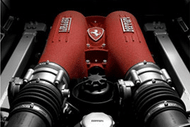How To Detail Your Car's Engine
30th Jan 2025 @ 10:15 AM
Engine Detailing: How to Clean and Protect Your Car’s Engine Like a Pro
Engine detailing is the process of cleaning, degreasing, and protecting the engine bay to maintain its appearance and performance. A well-maintained engine not only looks great but also helps prevent dirt buildup that can affect components over time. With the right engine cleaning products and techniques, you can detail your engine in just 45 minutes to an hour every few months.
Step 1: Removing Debris from the Engine Bay
Before starting the engine bay cleaning, remove excess debris trapped in your hood, grille, and vent openings. This is especially important if you live in an area with seasonal changes that bring leaves, dust, and road grime. If you have compressed air, use it to blow out dirt. Otherwise, a hand brush will do the job.
Step 2: Protecting Sensitive Engine Components
Before applying an engine degreaser, protect electrical components such as sensors, the distributor, and spark plug openings. Use plastic bags secured with rubber bands or tape to prevent excessive water exposure. While modern engines are built to withstand some moisture, these precautions help avoid potential issues.
Step 3: Applying Engine Degreaser for Deep Cleaning
To effectively remove grease and grime, warm up your car engine slightly. It should be warm to the touch but not hot—if you can hold your hand on the engine without discomfort, it's the right temperature.
When choosing an engine degreaser, avoid harsh petroleum-based cleaners that can damage rubber and vinyl engine components. Instead, opt for a citrus-based or water-based engine cleaner for an eco-friendly and safe approach.
- Apply the engine degreaser starting from the lower areas and working your way upward to prevent excess dripping.
- Be mindful of overspray—if any gets on painted surfaces, wash it off to prevent wax removal.
Allow the degreaser to soak for 3 to 5 minutes, ensuring it doesn’t dry out. For light dirt, rinsing may be enough, but for heavy grease, use a soft to medium bristle brush or a long-handled parts brush to agitate the grime before rinsing.
Step 4: Rinsing the Engine Bay
Once the degreaser has loosened the dirt, rinse the entire engine compartment with low-pressure water. If using a high-pressure nozzle, keep it at a safe distance to avoid spraying directly on sensitive electrical connectors.
After rinsing, allow the engine to air dry for a few minutes. For a spot-free finish, use a vacuum with a blower function or an air compressor to remove excess water.
Step 5: Protecting and Enhancing Your Engine’s Appearance
Once the engine is dry and cool, apply an engine protectant spray to condition and protect hoses, wires, and plastic engine covers. If you don’t have an engine-specific protectant, a rubber and vinyl protectant will also work.
For a high-gloss shine, use a quality detailing spray on painted surfaces inside the engine bay. Simply spray and wipe with a clean microfiber towel to enhance the finish.
Car Engine Detailing: Final Touches
Many car enthusiasts take engine detailing a step further by adding polished aluminum parts, painted components, or chrome finishes for a custom look. Whether you're keeping it simple or going for a showroom finish, a well-detailed car engine adds value and enhances the overall vehicle presentation.

